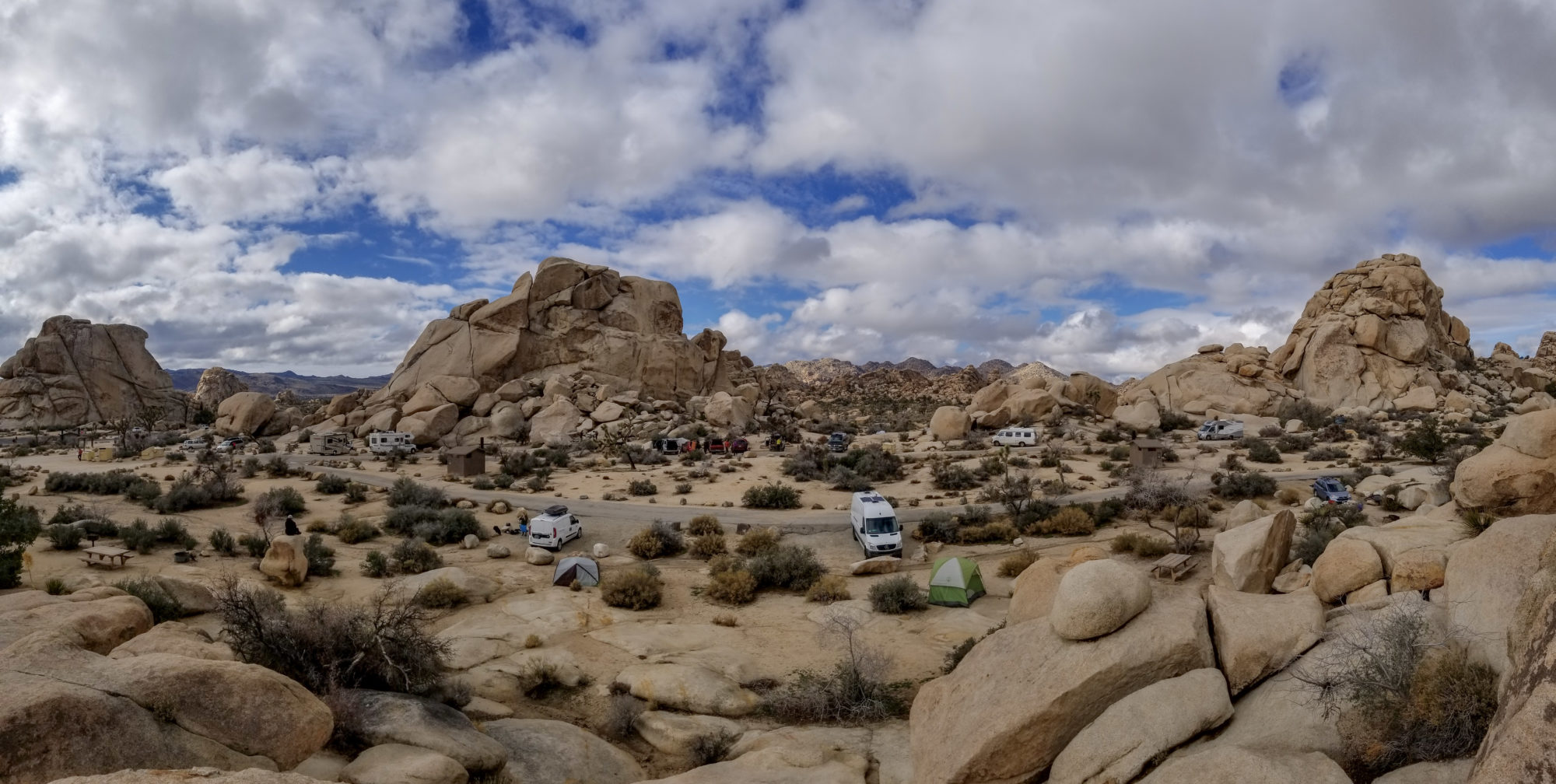[dropcap size=big]J[/dropcap]oshua Tree National Park is largely OK now thanks to volunteers and emergency funds. But how much longer can our national parks (and other government agencies) run on goodwill and savings?
The day after a desert shower, my girlfriend and I pulled into the main entrance of Joshua Tree National Park, as a park ranger struggled to open the fee station door. We drove up beside her. “You don’t have to pay, you can go,” the ranger said as she waved us in and continued to play with the door. Dozens of other vehicles followed.
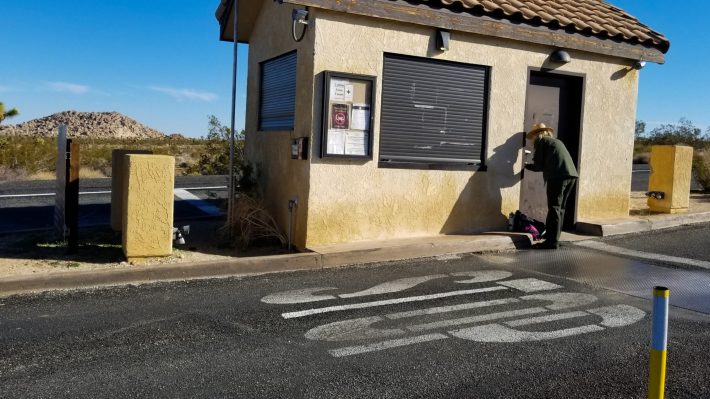
Roughly 30,000 park rangers have been without a job and pay since for weeks. So have the hundreds of civilians and scientists that also work in our national parks. One visitor begged the ranger to accept his money but she turned him down reluctantly. “We’re legally not allowed to collect your money.”
The popular spiritual destination is entering the fourth week under the US government shutdown. Earlier in the month there were reports of vandalism and chaos within the park but on the day we were there, the ranger “on-duty” was more concerned about the effects of last night’s rain rather than the shutdown. She told us that certain roads were closed but other than that, things were “fine.”
RELATED: Newsom Extends Lifeline to Furloughed Federal Workers in California
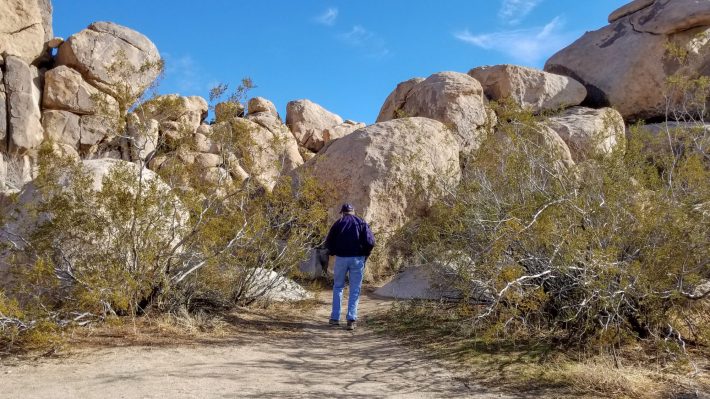
Joshua Tree’s resurgence is due in part to the work of volunteers, local businesses, and tribal members. “The park expresses its appreciation for the contributions of local volunteers, who provided basic sanitation at campgrounds and other closed areas during the lapse in appropriations. Their efforts have contributed significantly to the reopening of campgrounds and restoring access to other closed areas of Joshua Tree National Park.” The NPS said in a statement.
Last week, Joshua Tree shutdown for a day and additional staff was brought in to empty trash cans and recycling, clean bathrooms and close-off certain roads. The NPS was able to do this because of emergency funds that came from visitors fees, a controversial move triggered by Acting Interior Secretary David Bernhardt that some say could jeopardize the future of our national parks. “NPS officials have determined that by using Federal Land and Recreation Enhancement funds to immediately bring back park maintenance crews to address sanitation issues, the park will be able to maintain some visitor services, including reopening the campgrounds.”

National Parks collect visitors fees to pay for repairs, additional staff, and other enhancements. By law, parks that charge a visitors fee are required to spend 80 percent of that money. The remaining 20 percent goes to cover parks that don’t charge a fee, which means many parks plan for years in advance about where that money is going to go.
Using these funds essentially as a temporary operational budget and depleting parks of valuable resources now, might make things look like they’re okay on the surface but could cause major problems down the line. Bernhardt declared in a memo to the NPS that, "these operations shall be maintained until such funds have reached a zero balance."
RELATED: The Blank Canvas ~ Joshua Tree, São Paulo, Vienna
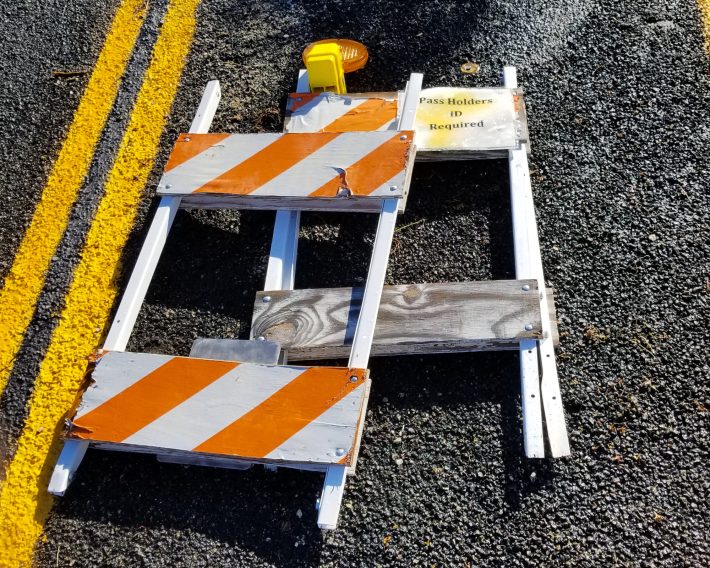
The recent vandalism spotlights the kind of behavior that the already underfunded National Parks system deals with on a regular basis (this isn’t the first time Joshua Tree has been vandalized). When the government isn’t shutdown, a staff of about 100 monitors a park roughly the size of Delaware.
Part of the appeal of Joshua Tree is its general size and remoteness. In total, Joshua Tree covers roughly 800,000 acres.
Some users on Twitter pointed out that even a full time staff might not be enough eyes to keep watch over the entire park. Others spoke about their experiences living near other national parks like Yellowstone and the Grand Canyon and the prevalence of vandalism and unruly visitors in those regions.
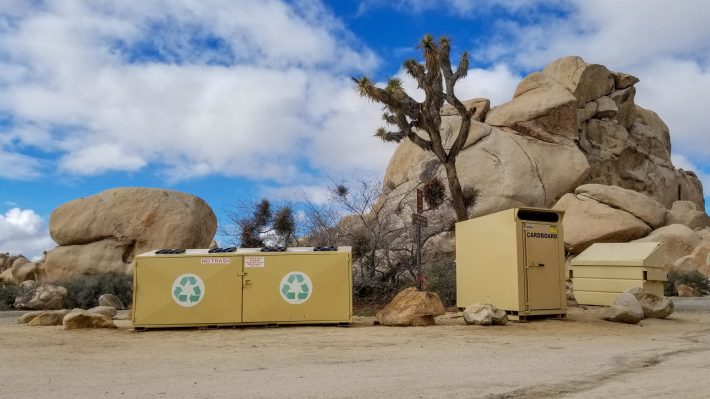
In recent years, Joshua Tree’s attendance has soared from 1.3 million in 2013 to almost 3 million last year. At the same time it’s garnered a reputation for being a bit like the Wild West.
People regularly go missing and the Mojave has long been known as a place to get rid of bodies. Just last month a former marine was charged with burying a man in a shallow grave in Joshua Tree. Some visitors claim to go their entire stay without seeing any park rangers, even when the government isn’t shutdown.
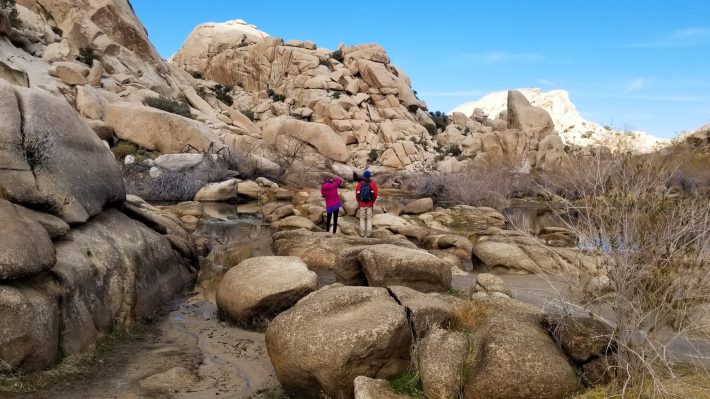
On our weekend trip, my girlfriend and I spent hours driving along the main roads – starting in the high Mojave and ending in the lower Colorado desert – making stops along the way at campsites and exhibits. Overall there was a sense of order. Almost all of the bathrooms that we encountered were open and many of them were stocked with toilet paper and make-shift trash cans.
I opened more empty trash receptacles then full ones and had to go out of my way to find litter. We didn’t encounter any off-roading vehicles or rowdy visitors. It felt like another day at a national park, minus the rangers.
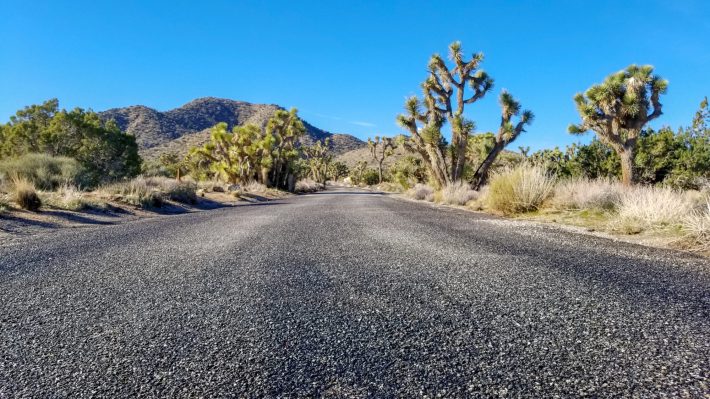
While there certainly have been some isolated incidents of unprecedented vandalism and recklessness since the shutdown, the vast majority of the people visiting places like Joshua Tree come peacefully.
I think for every one or two assholes, there are hundreds if not thousands of good people visiting our national parks. At it’s best, our national parks system still relies primarily on personal accountability and trust.
The destruction of sacred lands has been disappointing to say the least but the community that has sprung together to maintain Joshua Tree in the rangers absence has been inspiring. Parks like Joshua Tree can handle this situation better than places that don’t see as many visitors but it will likely be months before we can fully understand the impact of the loss of funds that these parks have endured.
RELATED: A Struggle Against Charters: This Is Why Teachers in Los Angeles Are on Strike
